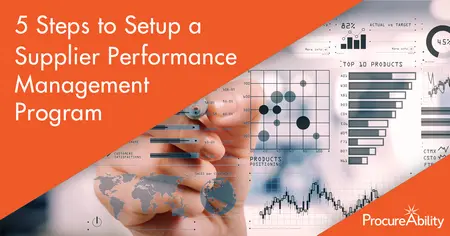
Many Procurement teams overlook supplier performance after a sourcing event. Simply handing a contract to your Operations team is all too easy! However, maintaining a strong supplier performance management program is key to building a competitive supply base and ensuring strong supplier relationships. Follow this 5-step process to establish a supplier performance program of your own.
- Choose the right Key Performance Indicators (KPI’s)
To choose the right KPI’s, start by asking this question: What are your business needs and goals? Each industry and each company needs something different, so Procurement and Operations teams should select KPI’s’ that prioritize those goals. For example, on-time delivery is highly important to retail companies, whereas safety is important to utility companies.
After identifying business needs, ask this question: What are you purchasing? The right KPI’s vary for each category. KPI’s commonly fall into 4 categories:
- Delivery & Logistics
- Quality & Service
- Pricing & Contract Terms
- Safety & Environment
- Establish Service Level Agreements
Business needs may be stringent or relaxed, so plan for the right service levels and hold suppliers accountable. For example, retail companies need to have strict delivery requirements for carriers to meet demand. Some high-velocity retail operations require carriers to deliver within a 15-minute window, early or late deliveries can severely disrupt warehouse operations. On the other hand, on-time delivery may not be as important to a utility company expecting a semi-annual delivery of wood poles that could be delivered anytime within a week. Just remember, requiring and enforcing high levels of service comes with a cost.
- Track Performance
Determine what to measure then determine how to measure it. Tracking supplier performance is best done quantitatively. Data from applied/available business systems provide a directly quantitative way to measure suppliers. For example, data from a Transportation Management System or Warehouse Management System should provide information on the expected and the actual time of delivery, which would provide on-time delivery insights.
Many times, however, tracking performance with data is difficult since quality or delivery may be very complex, as is common with services. To quantify service quality, you can apply a standard rating scale (i.e. 1-5 or 1-10) to rate supplier quality or service levels. For example, to rate the performance of a construction firm, you could rate their “Customer Service,” “Site Cleanliness,” or XXXXX on a scale of 1-10. These criteria are not easily measured quantitatively, but applying a rating scale helps you numerically show the supplier and your stakeholders how the supplier is performing.
When tracking performance, keep a historical record of the scores to analyze performance trends over time. Are suppliers improving? Or getting worse?
- Address Performance
To address performance, set a cadence for delivering feedback. Deliver feedback to more important suppliers more often and deliver feedback to less important suppliers less often. You may meet in-person with your key suppliers quarterly, whereas less important suppliers may only receive an annual email with a performance report.
Because performance tracking is quantitative, suppliers will more easily understand how they have performed: whether it’s acceptable or unacceptable and how they rank among their peers.
- Take Action
Incentivize strong performance and correct poor performance – this step is very important for a well-maintained process.
Examples of Incentivizing your suppliers are: providing a financial bonus or public recognition. Blue-Ribbon programs go a long way!
Examples of Correcting supplier performance: are helping them refine their processes, improving communication between your operations teams and theirs, or removing them entirely.
Following this 5-step process will allow you to build stronger supplier relationships and to strengthen your business! Giving suppliers feedback and letting them know how they are performing gives them insight that they may not have. So be sure to pick the right KPI’s, measure them quantitatively, address suppliers’ performance, and take action to ensure they are delivering what you need!
Subscribe to ProcureAbility Insights to access whitepapers, presentations, plus our latest thought leadership.



